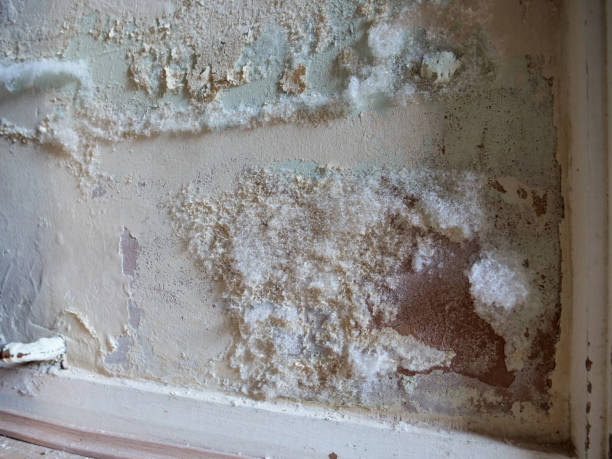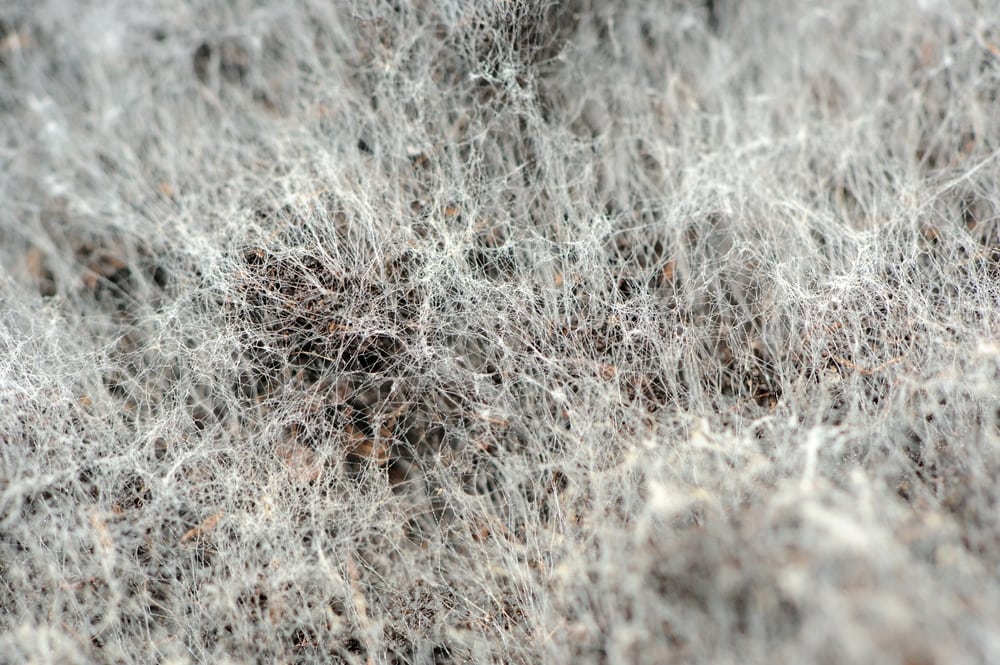Table of Contents
The Dangers of White Mold You Shouldn’t Ignore
White mold may look less threatening than its dark, fuzzy cousin—black mold—but don’t let its color fool you. The dangers of white mold are just as real, and in many cases, even harder to detect. From compromising your home’s structure to quietly affecting your family’s health, this type of mold thrives in silence and strikes without warning.

In this blog, we’ll explore seven major dangers of white mold, where to spot it, and how to stop it in its tracks—before it costs you thousands in repairs.
1. White Mold Can Damage Wood and Drywall
One of the biggest dangers of white mold is its appetite for porous materials. Unlike mildew, which stays on the surface, white mold digs deep—into your wood framing, drywall, insulation, and even ceiling tiles.
Over time, white mold can weaken beams and studs, causing sagging floors and compromised structural integrity. This is especially common in basements, attics, or behind appliances where leaks or condensation go unnoticed.
Did You Know? White mold often forms after water damage. According to the EPA, materials that stay wet for more than 24–48 hours are likely to grow mold.
2. It Can Be Mistaken for Efflorescence
White mold can sometimes look like a harmless powdery substance known as efflorescence—a salt deposit that forms on concrete or brick. Many homeowners try to clean it with water or ignore it entirely.
This is one of the more deceptive dangers of white mold: by the time you realize it’s mold, it may have already spread beneath surfaces. A mold inspection by certified professionals like PuroClean of Santa Maria can help confirm the difference.
3. White Mold Thrives Where You Can’t See It
Basements. Crawl spaces. Behind drywall. Inside HVAC ducts. These dark, damp spaces are breeding grounds for mold—and white mold takes full advantage.
Because it blends in with many surfaces and doesn’t produce a strong odor at first, it can grow unnoticed for months. This is why one of the critical dangers of white mold is its stealth—it often becomes visible only after it has caused damage or triggered symptoms in residents.
4. It Poses Serious Health Risks
Though less infamous than black mold, white mold can still cause significant health issues. People with allergies, asthma, or weakened immune systems are especially at risk.
Common symptoms of white mold exposure include:
- Persistent coughing or sneezing
- Irritated eyes or skin
- Headaches
- Fatigue
- Respiratory infections
These health concerns highlight one of the biggest dangers of white mold—its ability to compromise indoor air quality and trigger chronic reactions in vulnerable individuals.
Pro Tip: Regular air duct and HVAC filter cleaning can prevent spores from circulating through your home.
5. White Mold Reduces Property Value
Whether you’re selling your home now or five years from now, mold is a deal-breaker for buyers. It raises red flags for home inspectors and appraisers, often leading to lower offers—or no offers at all.
One of the lesser-known dangers of white mold is the financial impact it can have on resale value. Prolonged exposure and structural damage may even require you to replace insulation, drywall, or framing before listing your home.
6. It’s Harder to Remove Than You Think
Many DIY articles recommend vinegar, bleach, or baking soda to clean up mold. While these may temporarily remove surface spores, they often fail to eliminate the root problem, especially if mold has penetrated drywall, carpet padding, or subflooring.
This leads to one of the costliest dangers of white mold: false security. You think it’s gone—until it returns stronger. Professional remediation by a certified team like PuroClean of Santa Maria ensures thorough mold removal, moisture control, and prevention.
7. Mold Spreads Quickly After Water Damage
Burst pipes, roof leaks, or even a leaking AC unit can create an ideal environment for mold to thrive. If water is not properly extracted and dried within 24–48 hours, white mold can begin to spread rapidly, especially in warm, humid climates like Santa Maria, CA.
The aftermath of water damage is where white mold often takes hold—and why fast professional response is key.
Where to Look for White Mold in Your Home
Not sure where to begin? Here are the top hiding spots to check:
- Behind washing machines or dishwashers
- Basement corners and ceiling joists
- Under sinks and kitchen cabinets
- In the attic around roof leaks or vents
- Inside HVAC ductwork or around filters
- On furniture or wood trim near windows
If you find a powdery, white or off-white substance, don’t dismiss it. Let the pros take a look before it becomes a serious issue.

❓FAQs About White Mold
Is white mold more dangerous than black mold?
Not necessarily more dangerous, but it poses different risks. Both can cause health issues and damage materials, but white mold is harder to detect and often mistaken for other substances.
How can I tell if I have white mold or efflorescence?
Try a water test: efflorescence will dissolve with water, while mold will smear or stay put. However, professional mold testing is the safest route.
Can white mold be killed with bleach?
Bleach can remove surface spores but doesn’t penetrate porous materials. For deep contamination, you’ll need professional remediation.
Does homeowners insurance cover mold removal?
Only sometimes. Most policies cover mold if it results from a covered peril (like a burst pipe), but not from long-term neglect. Always check with your insurer.
How fast does white mold spread?
It can begin growing within 24–48 hours in damp environments and spread rapidly through air or HVAC systems.
Don’t Let White Mold Take Over — Call PuroClean of Santa Maria
If you suspect white mold in your home—whether it’s in your attic, basement, or ductwork—don’t wait for it to become a bigger problem. At PuroClean of Santa Maria, we provide:
✅ Certified mold inspection
✅ Thorough remediation & disinfection
✅ Air purification & odor control
✅ Moisture detection and water damage restoration
Our local team knows the unique climate challenges in Santa Maria and nearby areas—and we act fast to protect your home and your health.
📞 Call PuroClean of Santa Maria today at (805) 975-0800 or request an inspection online to stop white mold before it spreads.
(805) 975-0800 | Contact Us Online | Available 24/7 | Google Business Profile



